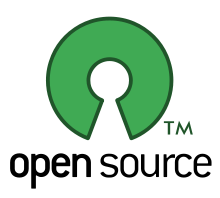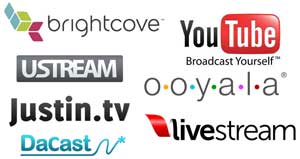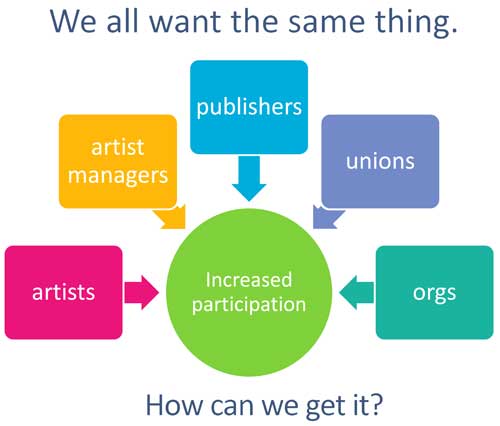SOPA and PIPA - Fighting online piracy or stopping innovation? Open source alternatives to common utilities.
 This Wednesday, 1/18/2012, Wikipedia, Reddit , and Boing Boing will go dark in protest of the Stop Online Piracy Act that is being considered in US House and the Protect Intellectual Property Act in the US Senate. These protesters are asking for the US public to call or write to their elected officials regarding the proposed legislation. Bloggers in this forum have taken a stance against limiting open source and net neutrality in the past and these two bills pose no less of a threat to the innovative culture that is open source.
This Wednesday, 1/18/2012, Wikipedia, Reddit , and Boing Boing will go dark in protest of the Stop Online Piracy Act that is being considered in US House and the Protect Intellectual Property Act in the US Senate. These protesters are asking for the US public to call or write to their elected officials regarding the proposed legislation. Bloggers in this forum have taken a stance against limiting open source and net neutrality in the past and these two bills pose no less of a threat to the innovative culture that is open source.
Although there has been a healthy open source community for decades, legislation like SOPA or PIPA would exclude open source software opportunities to developers in the US if passed. These bills would essentially lock down portions of the internet to users in the US by creating a federally kept blacklist of internet sites that internet service providers would in turn prevent from being served to their US customers. This would prevent the US public from accessing the steady stream of free content from the open source community that has been continuously redefining the online world for decades.
Open source has been the frontier of technological innovation for decades and by passing this legislation the US Congress will simply ensure that the next Facebook, Google, or Amazon simply never get off the ground from US soil. In celebration of Open Source a list has been compiled with some great open source alternatives to common commercial software packages that can be downloaded for free:
1) OpenOffice: Similar functionality to MS Suite with modules for word processing, spreadsheets, databases, presentation and drawing
2) Dia: Produces charts and flowcharts like MS Visio.
3) WordPress and Joomla: WYSIWYG web page builders that compare favorably with aspects of Adobe Dreamweaver.
4) paint.net: An image editing program with much of the some of the same functionalityof Photoshop.
5) Pidgin: A messaging aggregator, useful in communicating with all the disparate messaging programs out there.
*) Foxit: A pdf reader that won't bog down your system and won't update every six hours like Adobe Acrobat does.
Protect Your Digital Images Online: Methods for Controlling Your Intellectual Visual Property
“We Are More Often Treacherous Through Weakness Than Through Calculation.” -Francois De La Rochefoucauld

It is my intuitive belief that most theft of images happens online because it is really, really easy. Indeed, this isn’t the first and it won’t be the last article on the Internet about preventing people from stealing your visual images. The only real way of guaranteeing that no one steals the digital copies of your artwork is to not put it up. This, however, is n
ot necessarily a viable option for those interested in reaching an audience in the information age.
The following are a few simple ways to make it more difficult for others to copy your images.
1) Disable right click on images Code in commands to disable right click on images or <body oncontextmenu="return false;"> You will circumvent a good portion of casual illegal copying your images.
Pros: Easy, fast to implement Cons: Doesn’t block other common types of theft.
2) Digital watermarking Enter this term to any search engine for vendors who can help you acquire these services. They vary from simply imposing a subtle image onto your work once it is copied to embedded code that helps you track usage of your image whenever and wherever it is used.
Pros: You can embed visual trails back to your home website and boost your traffic, helps prevent people from passing off images (once they are stolen) as their own, and relatively fast to implement. Cons: The software will cost money and take time to implement. The watermarks are superimposed on your images and can detract from their impact.
3) Copy protection software Type ‘Copy Protection’ into your search engine and numerous software products will turn up for a variety of price points.
Pros: Copy protection software can be quite sophisticated and can dissuade a great majority of the population from coping your images. Cons: The software will cost money and take time to implement.
4) Adobe Flash Images in an Adobe Flash slide-show are much harder to copy.
Pros: You maintain quality, Flash is nifty Cons: Not everyone has Flash on their computer. People can still take screen shots. If you don’t know flash it will cost you money to implement through a designer.
Protecting intellectual property is also a matter of law and a serious one at that. For more information, legal information, please consult with a intellectual property attorney. Most states have pro-bono service organizations for artists. Simply enter in “lawyers for the arts <your state name>” into your search engine and you will be well on your way. For more general information about copyright law I would suggest you review a few more nifty articles about protecting your intellectual property.
(Photo: CC by Horia Varlan)
Livestream, Ustream, We all stream: A practical guide to streaming platforms

- With so many choices when it comes to streaming video, what's an arts organization to do?

A few weeks ago, I highlighted some emerging trends in arts marketing for 2011. One of the trends was “changing media consumption”, part of which includes arts organizations streaming performances live, whether to ballparks or online.
So let’s say that your organization is interested in streaming a performance live as it is happening or streaming a pre-recorded performance at a scheduled time. What are your options as far as platforms for streaming that video? And which organizations are out there using these platforms?
YouTube: The Non-option for Live Streaming
YouTube is the big name for online video, but livestreaming on YouTube will only be available for content partners. YouTube has not announced when livestreaming capabilities will go live. Approved by YouTube, content partners are people and companies that post regularly to the site and so that they can monetize their content with ads and rentals, obtain better digital quality for their uploads, and use YouTube’s Insight analytics tools.
You can apply to become a YouTube content partner to gain the above benefits. They have a special program specifically for nonprofits that currently includes arts organizations like Anaheim Ballet, MOMA, and Pilobolus Dance.
So when should you use YouTube? As of now, it’s the most mainstream choice for video, and therefore the easiest platform on which to build a community. YouTube has also streamed major events involving the arts community, like the Guggenheim’s YouTube Play Event. You might use it to post clips of the streaming event after the event is over and to host videos long-term; but right now, don’t depend on YouTube to release streaming capability any time soon.
Brightcove/Ooyala: The Gold Standard
Brightcove is the high-end gold standard for streaming. Many major corporations use it, as well as arts organizations like San Francisco Ballet and the Royal Opera House. It’s best for larger companies with highly valuable and highly demanded content as well as companies who want to fully integrate their streaming efforts with other components of their technology portfolio, via APIs, SDKs and other programming tools. Ooyala has a similar high-end set up used by companies like TicketMaster and ElectronicArts. Brightcove and Ooyala are great for larger companies with a lot of resources at their disposal. However, the price may not be affordable for organizations likely to use livestreaming once a year and only intend to stream to computers or existing mobile platforms—as opposed to a projector that would require higher quality video or a customized mobile platform that would require extensive development.
Livestream, Ustream, and Justin.tv: The mainstream for livestreaming
You may be thinking, “Okay, Brightcove sounds great, but my organization is not nearly as big as the Royal Opera House.” The most popular choices for streaming video amongst American arts organizations are livestream.com and ustream.tv. Both platforms offer mobile integration, easy interfaces and most any other feature you would want. Livestream even offers monetization opportunities.
Justin.tv appears to be gaining market share, but fewer arts organizations are on it, and its audience tends to skew younger and more male than the other platforms. Organizations like Wolf Trap have streamed pre-recorded events on livestream, a necessity when subtitles must be entered. Last summer the organization’s opera company streamed a cabaret performance of two world premiere operas Bastianello by John Musto and Lucrezia by William Bolcom.
Lee Anne Myslewski, Administrative Director, described the opera’s choice to use Livestream. “We chose Livestream because the interface was the most intuitive and it seemed to work the most consistently on all platforms/browsers. (Intuitive is important!) We were also specifically looking for an integrated chat function so that the audience and the artists could interact in real time during the broadcast. The process was smooth – easy for even a non-video person to create. We did have some viewers struggle with the speed of the file and intermittent pauses, but that could have been due to any number of causes - file size, their connection speed, or traffic on the site. If we go forward with the project we’ll likely use them again.”
One of the most notable successes on Livestream was Misnomer Dance Theatre’s stream of a performance in April 2010, which reached 2,000 viewers in 19 countries. Organizations are not only using LiveStream and Ustream to broadcast perform footage, though. They are also using it for production diaries like Second Wind Productions, press conferences like the Detroit Symphony Orchestra and educational initiatives like the Orange County Public Schools Orchestra Programs.
DaCast: No fuss monetization
Increasingly, companies want to monetize online content, and a recent Pew study (good summary here by ReelSEO) shows that people will pay for it. Monetizing content can basically be done in two ways: generating revenue through advertising, or having the consumer directly pay for online content (pay per view), which can be on a one-off or subscription basis.
LiveStream requires $350 a month for their premium service, which includes opportunities for monetization. However, if you want to monetize your content with less financial commitment up front, DaCast is a sensible option.
DaCast describes itself as self-service model. In a way, all streaming services are self-service, but DaCast allows companies to monetize their content in the same self-service way that you can upload a video to YouTube. The only fees that you pay are for bandwidth, with a minimum $5 commitment. (The first 10GB are free, too.) Most excitingly, DaCast has developed a plug-in for Flash which allows users to pay directly on their video screens, rather than clicking through to another page.
The question is: could a paid model be right for your organization? As DaCast CEO Stephane Roulland said, “This is an excellent question.” Aggregated sites like classicaltv.com and Ovation are already monetizing content. Classicaltv uses the pay-per-view model while Ovation uses the ad-based revenue model. The Metropolitan Opera’s Met Player might be one of the one of the only single-organization streaming sites. The key is figuring out if your organization will break even on the fees to secure the rights and the fees to stream.
More resources:
- Here's a handy comparison chart from Streaming Media.
- If you are interested in learning about your options when recording said performance, check out our Making a Video webinar.
- You may also be interested in our Social Media, Video Footage & The Law white paper to read about clearing rights.
Fair Use of Dance-Related Materials: A Discussion
In response to CAMT's "Social Media, Video Footage and the Law" white paper, Lisa Niedermeyer from Jacob's Pillow Dance Festival contacted us with a related video about fair use as it relates to dance-related materials. As the white paper mentions, fair use can be a nebulous concept as far as what, how, and how much copyrighted material can be legally used. The video is a more detailed discussion of The Dance Heritage Coalition's published statement "Best Practices in Fair Use of Dance-Related Materials". It features curators, archivists, documentary filmmakers, librarians and other collectors of dance-related materials discussing what they currently regard as reasonable application of the Copyright Act's fair use doctrine.
What you need to know about viral video and the law
![]() Technology in the Arts has just released a publication reviewing legal issues surrounding using video footage online. (Access the PDF publication here.)
Whether you are in marketing, development, education or operations, chances are that you will encounter some kind of contract or legal issue involving performance footage, either online or offline. This white paper serves as a survey of current industry trends and practices, as well as a guide to those exploring the ever-changing landscape of online media and the intellectual property and union issues associated with it. While nothing can replace the advice of a good lawyer on legal issues, this guide can alert you to potential problems while you are planning online media campaigns involving performance footage.
Technology in the Arts has just released a publication reviewing legal issues surrounding using video footage online. (Access the PDF publication here.)
Whether you are in marketing, development, education or operations, chances are that you will encounter some kind of contract or legal issue involving performance footage, either online or offline. This white paper serves as a survey of current industry trends and practices, as well as a guide to those exploring the ever-changing landscape of online media and the intellectual property and union issues associated with it. While nothing can replace the advice of a good lawyer on legal issues, this guide can alert you to potential problems while you are planning online media campaigns involving performance footage.
Do you have a story about issues you've had distributing performance footage online? Please share below.
Online Video: We All Want The Same Thing
This post also appears as part of the Arts Marketing Blog Salon hosted by Americans for the Arts.
 The world of arts management is changing, as all industries are changing, with the proliferation of technology. Especially with the increasing popularity of online media, we as arts managers have had to reconsider the way we see our performances. Is online video footage merely a vessel for our product? Or is it, in fact, our product? Or, can it also be a means to an end?
The world of arts management is changing, as all industries are changing, with the proliferation of technology. Especially with the increasing popularity of online media, we as arts managers have had to reconsider the way we see our performances. Is online video footage merely a vessel for our product? Or is it, in fact, our product? Or, can it also be a means to an end?
Many see social media and its democratization of internet content as the tool that will restore relevance to the arts, which critics claim is no longer present.
In recent weeks, we’ve seen changes in the social media landscape that make the issues surrounding performance footage all the more relevant. Twitter is adding video embedding capability. YouTube will soon be able to handle streaming video for content partners. These are signals of a trend that is already in progress—a movement of online video footage becoming not only accepted, but commonplace. Like it or not, online video is here to stay.
It was for this reason that I assembled a panel of experts on the rise of streaming video, and its interaction with our union relationships to speak at the NAMP Conference this November. It will be an opportunity to talk about the challenges that we face, as an industry, when it comes to video footage.
As an employee of an arts service organization and an arts management student at Carnegie Mellon, I’m in a unique position to examine performance footage in social media. Instead of having a vested interest in what would be best financially for a given organization, I can look at what is best for the arts industry as a whole and where the industry stands on these issues.
Over the past year, I’ve been looking at intellectual property issues as they pertain to performance footage. This research will culminate in an upcoming white paper for the Center for Arts Management and Technology. I’ve talked to unions, I’ve talked to organizations, and I’ve talked to artists. It’s fascinating to listen to their positions and how they perceive “the other side.”
Artists sometimes view online distribution of performance footage as a sort of Pandora’s Box: releasing their performance footage means relinquishing control of it and monetization of the content. They see organizations as trying to take advantage of their skills, or reducing the value of their work. Although they understand that organizations are struggling, they are struggling, too.
Organizations, on the other hand, are struggling with the realities of the economic downturn, as well as a decrease in newspaper circulation and in the general effectiveness of advertising in traditional media. They see new media as a lifeline, and take it on in order to secure their organization’s future. Some perceive that artists don’t equate saving the organization with saving the artform and the artist’s own career. This assumption leaves them puzzled and unsure how to proceed.
Although these positions seem diametrically opposed, both artists and organizations have common interests. In choosing and chatting with my panelists, who come from all different disciplines and affiliations, it seemed like there might be some fundamental conflicts between them. However, during our first conference call, I was amazed at how willing we were to listen and how much we genuinely wanted to understand each other’s viewpoints.
More often than not, I’ve found that we are all striving for the same thing—increased attendance, our own ensured success, and in turn, a bright future for the arts in America—we sometimes just have different ways of going about it.
Eric Whitacre dreams of his Virtual Choir Machine
This morning I had the pleasure of watching Eric Whitacre's latest virtual choir release (see video below). This effort, the composer's second, combined 185 individual singers from 12 countries recorded independently. Whitacre conducted the choir through a YouTube video. The videos were then combined together by producer Scottie Haines in a very familiar formation--the videos look like they are on risers, with Whitacre in the traditional conductor's position.
Whitacre has always been looked on as a sort of "rock star" composer in my peer group (I define them as "20-something music nerds"). My college choir was ecstatic to sing his pieces--they sounded new, modern, but with elements we could connect to both as musicians and listeners. They had cool titles, like Leonardo Dreams of his Flying Machine. (I mean, who writes choral pieces about Leonardo da Vinci's sketchbook?) And, of course, they contained those famous "shimmer" chords that we loved to sing. His "rock star" positioning is evident in his YouTube page. (check out the promotional photo that proclaims Marvel Comic/Criss Angel style "I. AM. ERIC!") Projects like this cement his reputation, and you have to admire him for it. Good music, marketed well.
Why is this project so fascinating? It's new, sure, but seeing the singers' heads, framed by their "natural surroundings" was especially compelling to me--more so than a simple video of a performance, like the YouTube Symphony Orchestra. Digitally created music presented in a digital medium rings true, more so than traditionally created music presented in a digital medium. It's the same reason why I've only been to one Met HD broadcast--I crave that feeling of "genuine-ness".
I've been doing a lot of research lately on video footage of the performing arts and have heard many different views on how video footage (especially streaming of entire performances) will either preserve or destroy the live performing arts industry. This debate exemplifies the inherent friction we sometimes find between the arts and new technologies. (There was a great speech given on this topic by Ben Cameron at the TEDx conference, if you haven't seen it yet.)
But I can't help coming back to my simple love of live performance. Nothing replaces it, in my mind. Maybe I'm atypical of my generation in that respect. Or maybe the fact that I get equally excited about Whitacre's 'Lux Aurumque' YouTube video and the Bach Sinfonia performing Bach's complete motets live in a concert hall shows that I am fundamentally and irrevocably a part of it.
Arts and Technology Round-up
Oh the joys of Google Reader! I love reading through the blogs and news articles of my fellow arts managers. They remind me of the larger world out there beyond the Masters of Arts Management program, especially after the drudgery of mid-term week! (If you're unfamiliar with Google Reader, it's a handy way to access all the blogs and newsfeeds you want to read on a regular basis in one place. C/NET has a great guide.) I sifted through a few of my 1000+ accumulated new articles last night and found the following articles: Music education meets technology: Michael Bradley of Pima High School in Arizona uses Apple's Garage Band software to teach kids how to integrate music and technology. "There's a ton of different career opportunities in the technology side of music and being able to work in a recording studio or to manage and operate an auditorium," Bradley said. "You have to have the technology knowledge to be able to do any of that." Full article here.
After July 12, you might not be able to use wireless mics in the 700 MHz range. Joe Patti has the breakdown over at Butts in the Seats.
When a Carnegie Mellon grad makes robots for a living, it usually isn't a big news story. But this CMU grad makes musical robots. Eric Singer was featured in the Pittsburgh Post-Gazette for his creations (video below), which include computer-driven guitars (see video below), marimba, vibraphone, orchestra bells and other percussion instruments. He has worked with artists like They Might be Giants and Pat Metheny. Full article here.
Drew McManus covers how to create value outside of the performance itself --"what else of value, besides the actual music, do orchestras have that is interesting enough to potential ticket buyers and donors that it can be given away as a free gift" in two blog entries: The Three Keys To Social Media Marketing For Orchestras and Uncovering Hidden Value.
And speaking of creating value, is giving music samples away theft or promotion? Composer Alex Shapiro weighs in on newMusicBox in an article entitled "The Economy of Exposure: Publicity as Payment?".
Shouting it from the grassroots rooftops: Wolf Trap Opera and the digital season launch
For arts organizations, February brings with it the final throes of determining next year’s season. Some have renewals out already; others are still mired in scuffles with artistic, production or finance offices over which productions and dates will make next season the best it can be. Regardless of where you are in the process, if you are in marketing or PR, your thoughts have probably turned to how you will get the word out about the new season. You may have perfected publicizing your season through renewal mailings and paper season brochures, but how do you “shout your season from the rooftops” online? Kim Witman, director Wolf Trap Opera Company (WTOC), has embarked upon an innovative new campaign to launch the company’s season this year. Located just outside of Washington, D.C., Wolf Trap bills itself as the "future of opera", a slogan that the organization seems to have taken to heart both in its programming and in its marketing efforts. As a researcher of how non-profit arts orgs use technology, I have been continually impressed by Wolf Trap’s leadership in online social media, particularly in their creation of a ning (a customized social networking site)—one of the first performing arts orgs to do so.
This season, Kim aims to get the word out to existing fans and potential audience members with a "digital season launch", combining elements of technology, grassroots campaigns, and social networking. She will celebrate today’s announcement of the WTOC 2010 season by doing guest blog posts and interviews in a few places across the blogosphere (see a complete listing at the WTOC blog).
I caught up with Kim about a week ago--a busy week for her, as she was returning from the classical Grammys. Wolf Trap was nominated for Best Opera Recording for their 2009 recording of John Musto’s Volpone. As she prepared to launch the season today, February 9, she took the time to answer some questions about launching a season digitally.
Q. In previous blog entries on Technology in the Arts, we’ve talked about digital season brochures (such as the London Symphony Orchestra) and other ways to publicize your season using technology platforms. What exactly is Wolf Trap’s concept of a digital season launch?
Kim: Wolf Trap Opera’s season announcement is only a small part of a large kick-off for the entire 2010 season of the Wolf Trap Foundation for the Performing Arts, and within that context we don’t have the chance to provide a whole lot of detail and texture for the opera performances. My guest posts and interviews on colleagues’ blog sites give me a chance to tell many sides of our story while creating a bit of a buzz on our little corner of the web.
Q. So today is the big day of your season launch online. What is rolling out today and what are you doing today to “shout your season from the rooftops”?
Kim: The WTOC blog is a spot from which readers and fans can fan out to dig deeper into the parts of our season and the aspects of our company that are of particular interest to them. In addition to linking to posts on the other blogs participating in today’s effort, we’ve cranked out the news via our Facebook fan page (become a fan!), our Twitter feeds (www.twitter.com/WolfTrapOpera and www.twitter.com/kimpwitman) and the WTOC Hotspot. Phew.
Q. You drew inspiration for this campaign from marketing guru Seth Godin, who is publicizing his latest book not through newspapers, TV or any so-called “traditional” means, but instead through blogs and other online outlets. How did you modify this idea to fit Wolf Trap Opera Company’s specific needs for the digital season launch concept?
Kim: I kept the guts of Seth’s approach intact. (I wrote him before embarking on this project, in the spirit of imitation being the sincerest form of flattery. He wished me luck.) I contacted the writers of a few blogs that I read regularly, and I offered to write guest posts or engage in interviews that target the area(s) of interest between my readership and theirs. My effort isn’t nearly as massive as Seth’s was, but the goal is to focus a critical mass of attention on WTOC for a day!
Q. I have heard of surprisingly few arts organizations engaging in a digital season launch. Which aspects of your organization and its marketing channels made a digital season launch a good idea? Do you think this sort of effort will become commonplace in the future?
Kim: Our small company doesn’t typically have a lot of traction with traditional media anyway, so this isn’t a huge shift. For the last 10 years, our main vehicle has been the website, along with the two direct mail pieces that go out later in the spring (calendar with entire Wolf Trap season, and WTOC brochure mailed to a smaller target audience). We will continue with those traditional efforts.
The nerve center of this season announcement is the WTOC blog and its readership. The daily interchange between bloggers and their readers is vital, interactive, dynamic, messy and wonderful – and that’s the kind of energy we need to tap into. Clearly, I could’ve compiled all of the guest posts and Q&A’s and put them on a web page, but there would be something too clinical and linear about that.
These types of initiatives are becoming more common, and the trend will undoubtedly continue. Digital media make it possible to tell your story, no matter your budget. The challenge is to do it wisely and in a targeted fashion. All of the social networking initiatives are tremendously time-intensive, and they can rob a small organization of its precious human resources. We’ve chosen to ride this wave, but we’re constantly weighing its assets and liabilities.
Q. You mentioned the time-intensive nature of investing in social media and also touched on how different platforms serve your followers differently. WTOC currently has a blog, ning site, and Twitter, Facebook, and YouTube accounts. How do you manage which content goes on which site?
Kim: It’s an ever-moving target, but this is how we’ve been focusing our various initiatives:
- Facebook: By becoming a fan, you can get our updates (including my blog posts) through your Facebook feed. We look at this site as a way to deliver WTOC highlights to FB users without them having to go to a separate site.
- Hotspot (ning platform): The content is pretty much a clone of Facebook, with the added attraction of a comprehensive calendar. It exists primarily to inform fans and patrons of our non-ticketed events (artist panel discussions, free concerts, etc) and to provide one-click clearinghouse for non-Facebook-users.
- The WTOC Blog gives us a distinctive and informal voice. It allows me to speak in detail (and when appropriate, in industry jargon) to aspiring singers and other opera geeks. And it allows me to speak more frankly and conversationally than a traditional web page. (I love that the words “traditional” and “web page” can now exist next to one another!)
- Twitter still serves a niche audience. Although (when we’re not in season), both of our Twitter accounts often run the same updates, they are differentiated in the summer. I view mine as a conversation between me and my arts industry colleagues. And the WTOC twitter feed is intended to allow us to communicate with fans and patrons.
- The YouTube account isn’t terribly active because we are still struggling with artist rights and releases in order to be able to post content, and because we don’t have media staff in house to spend the time needed to do the pre-production work on video clips.
Q. How are you spotlighting the Season Launch through these networks?
Kim: We’ll simply be putting the WTOC blog link front and center, encouraging folks to link through and start exploring!
Q. Anything else you would like to tell us in closing?
Kim: My son is a software programmer, and I get most of my geek fix through him. He is quick to remind me that all of our technological tools are not effective until they disappear into the fabric of the task at hand. It takes some energy to ride the wave of the technological flavor of the day, but our goal is to conquer the learning curve and allow the technology not to be an end in itself, but a tool through which our real message is conveyed.
Kim Witman of the Wolf Trap Opera Company is celebrating today’s announcement of the WTOC 2010 season by doing guest blog posts and interviews in a few places across the blogosphere.
Link back to Kim’s blog entry at www.wolftrapopera.blogspot.com for a complete list – all of the links should be active by midday on Tuesday, February 9.
 Kim Witman assumed directorship of the Wolf Trap Opera Company in 1997 after having served the Company since 1985 in a variety of roles: principal coach, assistant conductor, music administrator and chief of music staff. A graduate of The Catholic University of America (M.M.) and Elizabethtown College (B.S. Music Therapy), she has also been a visiting faculty member in the opera departments of the Peabody Conservatory of Music and the University of Maryland. In addition, she has been music administrator, chorusmaster and assistant conductor for The Washington Opera, adjudicator for the Metropolitan Opera National Council Auditions and assistant conductor for Washington Concert Opera. Ms. Witman has been active as an opera coach and recitalist in the Washington, D.C. area since 1981. She has performed at the Kennedy Center, the Philips Collection, the White House, and at New York’s Merkin Hall. Committed to de-mystifying the opera business for fans and aspiring professional singers, she writes at www.wolftrapopera.blogspot.com.
Kim Witman assumed directorship of the Wolf Trap Opera Company in 1997 after having served the Company since 1985 in a variety of roles: principal coach, assistant conductor, music administrator and chief of music staff. A graduate of The Catholic University of America (M.M.) and Elizabethtown College (B.S. Music Therapy), she has also been a visiting faculty member in the opera departments of the Peabody Conservatory of Music and the University of Maryland. In addition, she has been music administrator, chorusmaster and assistant conductor for The Washington Opera, adjudicator for the Metropolitan Opera National Council Auditions and assistant conductor for Washington Concert Opera. Ms. Witman has been active as an opera coach and recitalist in the Washington, D.C. area since 1981. She has performed at the Kennedy Center, the Philips Collection, the White House, and at New York’s Merkin Hall. Committed to de-mystifying the opera business for fans and aspiring professional singers, she writes at www.wolftrapopera.blogspot.com.







